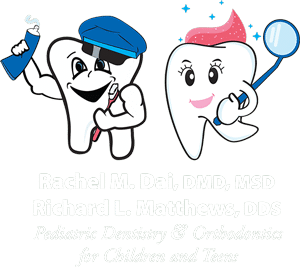The Buzz on Legacy Orthodontics
Wiki Article
What Does Legacy Orthodontics Do?
Table of ContentsLegacy Orthodontics Fundamentals ExplainedThe Basic Principles Of Legacy Orthodontics The Only Guide for Legacy OrthodonticsGet This Report about Legacy OrthodonticsWhat Does Legacy Orthodontics Mean?
In addition, we supply flexible treatment routines, flexible repayment choices and a fun, delightful experience.An orthodontist is a dental professional trained to diagnose, avoid, and deal with teeth and jaw abnormalities. They deal with existing conditions and are educated to identify problems that may develop in the future. Orthodontists deal with individuals of any ages, from children to grownups. People often connect an ideal smile with good wellness.
Malocclusion, or misaligned teeth, can bring about dental problems, consisting of tooth decay, periodontal illness, and challenging or agonizing chewing. Not every person is born with straight teeth. If you have a negative bite or big areas in between your teeth, you might wish to seek advice from a dental practitioner focusing on orthodontic treatment.
Indicators on Legacy Orthodontics You Should Know
( Picture Debt: DigitalVision/Getty Images) Orthodontists use taken care of and detachable dental gadgets, like dental braces, retainers, and bands, to change the position of teeth in your mouth. Orthodontic treatment is for oral abnormalities, including: Crooked teethBite issues, like an overbite or an underbiteCrowded teeth or teeth that are also far apartJaw misalignmentThe goal of orthodontic therapy is to enhance your bite.While you could think of orthodontists as generally for youngsters or young adults who need braces, they can deal with oral problems at any age. Orthodontists go to university, oral school, and orthodontic college.
All orthodontists are dental professionals, but not all dental experts are orthodontists. Orthodontic residency programs offer intensive, focused direction for dental specialists. They concentrate on two locations: How to properly and safely move teeth How to properly direct growth in the teeth, jaw, and faceOnce an orthodontist has finished training, they have the choice to come to be board licensed.
The Best Guide To Legacy Orthodontics
Misalignment, or malocclusion, is one of the most usual reason individuals see an orthodontist. It is genetic and is the outcome of size distinctions between the upper and lower jaw or between the jaw and teeth. Malocclusion results in tooth overcrowding, a twisted jaw, or uneven bite patterns. Malocclusion is generally treated with: Your orthodontist affixes metal, ceramic, or plastic square bonds to your teeth.If you have only small malocclusion, you may have the ability to use clear dental braces, called aligners, rather than traditional dental braces (https://pagespeed.web.dev/analysis/https-www-legacyortho-com/fjbdpbv998?form_factor=mobile). Some individuals need a headgear to help move teeth into line with stress from outside the mouth. After braces or aligners, you'll need to use a retainer. A retainer is a customized gadget that keeps your teeth in position.
They're usually used on kids. They can produce added room in the mouth without needing to draw teeth. If you have a serious underbite or overbite, you might need orthognathic surgical treatment (additionally called orthodontic surgery) to extend or reduce your jaw. Orthodontists make use of wires, medical screws, or plates to support your jaw bone.
You might require to see an orthodontist if you have: Crowding or not sufficient room for all of your teethOverbite, when your upper teeth come over your base teethUnderbite, when your base teeth are also much forwardSpacing or problems with gapsCrossbite, which is when your top teeth fit behind your base teeth when your mouth is closedOpen bite or a vertical gap in between your front base and top teethMisplaced midline, when the center of your bottom and upper teeth don't line up Remedying a dental malocclusion can: Make biting, chewing, and talking easierImprove the symmetry of our face and your overall appearanceEase pain from temporomandibular joint conditionsDifferent your teeth and make them simpler to cleanse, assisting protect against dental caries or dental caries It's typically a dental expert that first notifications misaligned teeth throughout a routine test.
Things about Legacy Orthodontics

During your first orthodontic appointment, you'll likely have: A dental examPhotos taken of your face and smileDental X-raysPanoramic (360 degree) X-rays of your face and headImpressions to create mold and mildews of your teethThese examinations will certainly assist your orthodontist know just how to wage your therapy. leesburg orthodontist. An orthodontist is a dental practitioner who's had training to treat your teeth and jaw
Orthodontists might carry out surgery, exams,X-rays,and even more to help you acquire a more comfy, healthier smile. An orthodontist is concentrated on your bite, so something like a damaged tooth would be taken care of by a dental practitioner. Orthodontists are dental experts but not all dentists are orthodontists. Orthodontists are concentrated on your bite, or the way your teeth meshed, and the straightness of your teeth. Ever before questioned exactly how stars constantly seem to have perfectly page straightened teeth? The answer often lies in the knowledgeable hands of an orthodontist. But what precisely does an orthodontist do? Orthodontists are oral professionals who focus on correcting irregularities in the teeth and jaws. Their knowledge surpasses just producing a stunning smile; it prolongs to boosting your overall oral health and function.
Facts About Legacy Orthodontics Revealed

While dental braces are one of the most generally recognized orthodontic therapy, orthodontists have a varied toolkit at their disposal. The specific technique chosen depends upon the severity of the situation, the person's age, and private choices. These tried-and-true dental braces use a system of brackets adhered to the teeth and connected by wires.
Clear aligners, like Invisalign, are a prominent option for people seeking a much more very discreet treatment option. These removable trays are personalized to progressively move the teeth's placement. Headgear may be utilized together with dental braces or aligners to use additional targeted forces, especially for dealing with jaw discrepancies. In situations of slim jaws, palatal expanders can be utilized to create area for correct tooth positioning.
Report this wiki page